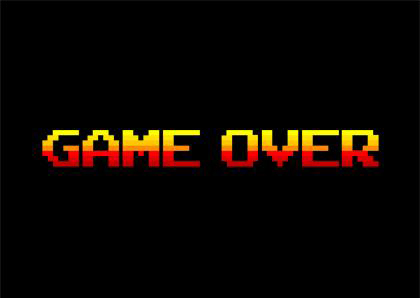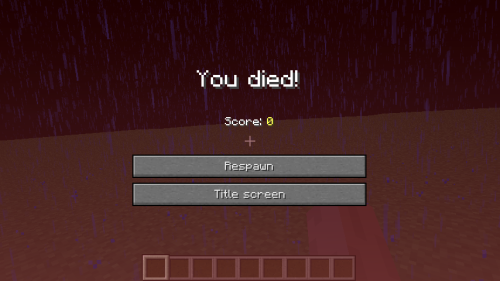In 1983 video games died. Here is the story of how that occurred, and why it won’t happen again.
In 1981 Atari were king of the hill in the video game industry, leading a booming home console market very much at the height of its popularity with its Atari 2600. But where there’s gold, there’s a rush, and they had no shortage of rivals. By 1982 Mattel’s Intellovision, Fairchild’s Channel F, Midway (the future developers of the Mortal Kombat series) and Bally’s Astrocade – as well as Coleco’s Colecovision and Magnavox’s Odyssey – had emerged as console competitors. Worse still for Activision, with no control over cartridge publishing i.e. the actual video games (which was where a large chunk of their revenue came from), third parties started releasing a cavalcade of games, meaning the market became increasingly saturated. In 1982 the market doubled, and then doubled again in 1983.

In the early eighties Atari had been responsible for developing the hugely popular titles Kaboom!, Pitfall!, River Raid, and the godfather of video games, Space Invaders. Yet now Atari were being joined by a parade of games of a more questionable quality. This gold rush caused shelf space in retail stores to be stretched thin, and per game revenue raced to the bottom. Atari weren’t too concerned, as through large investment they had secured exclusive home console rights to the biggest game of the arcade era, Pacman, along with Raiders of the Lost Ark and E.T., all to be released during the holiday period of 1982 in a multimillion dollar assault on the industry. However, the 2600’s hardware was falling behind and couldn’t match that of the superior arcade systems, and a poor port of Pacman with dull graphics and crude sounds lacked the arcade authenticity customers sought with their home consoles. Raiders of the Lost Ark was written off as a poor Pitfall! clone, and E.T. – a mediocre tie-in and supposedly easy cash grab – has since been called the worst game of all time. Cartridges were returned to stores in their droves. The assault had been an abject failure.

Atari had become obsolete. Warner, who owned Atari at the time, announced that by the end of 1982 revenue had dropped by 50%. Stock prices plunged, and a panic hit Wall Street. Total losses for Atari in 1983 stood at over half a billion dollars. It was game over for Atari, who were sold off to Commodore. Their competitors soon followed their exit from the business: Intellovision was liquidated and Coleco and Magnavox left the video game industry altogether. Video game cartridges were resigned to bargain bins and replaced with hotter trends such as He-Man, Cabbage Patch Kids and Transformers. Video games were a novelty that had worn off. The home console market in North America was dead.

In a peculiar twist of fate, the 1983 crash in North America coincided with the rise of console gaming in Japan. The Nintendo Entertainment System (NES) was released in the summer of 1983, and the Sega Mastersystem soon followed. Atari had been in discussions with Nintendo to distribute their console in North America, but Nintendo decided against this in light of Atari’s financial difficulties. Nintendo took control, and in 1985 released the NES in the US themselves, and in doing so defined a generation, and pioneered the video game revival. Video games soon returned to best seller lists, and it has been pretty much plain sailing since then.
But what about today? Could a crash happen again? Well perhaps it already has. Whatever happened to skateboarding games, huge in the late 1990s as a result of the Tony Hawk brand? Or platforming games made popular by Sonic and Mario? What’s going to happen to open world sandbox games like the Grand Theft Auto series, cinematic action adventure titles a la Uncharted, role-playing games like Final Fantasy, first person shooters like Call of Duty, or even League of Legends – the most popular game in the world today and worth tens of millions in the e-sports world? Well unlike today, video games in the late seventies and early eighties were restricted to a handful of genres due to their technological limitations. Of course what’s popular today won’t remain forever. Trend follows trend. And while those who pin their hope on a single success might suffer, the industry is more broader, diverse and robust than ever.

The Entertainment Software Association (ESA) in the United States found that 42% of Americans (150 million people) play video games at least three hours per week. Gaming is ubiquitous and can be found on every platform: phones, tablets, handheld consoles, home consoles, desktop computers and laptops. It is in sync and incorporated with most of the technology of today, not competing against it. The medium is now celebrated for its uniqueness and is becoming increasingly mainstream, and is viewed as the go to entertainment for gen x and gen y.
Gaming is a thoroughly unique experience, in that no other medium denies you access to its content based on your performance. By this I mean that if you are reading a book, the book doesn’t suddenly close itself and ask you to recite the key themes of the first three chapters, or in other words present you with a boss fight. And if you don’t give a satisfactory answer you can’t progress to the next chapter. A film won’t quiz you on the first hour of its content. As much as I adore reading and cinema-going, they are hamstrung by virtue of them being passive experiences. If you are terrible at a video game and can’t even progress past the tutorial stage as you keep dying, well tough luck. Get good. Because the truth is, video games never really died in 1983, they just respawned.


Leave a comment